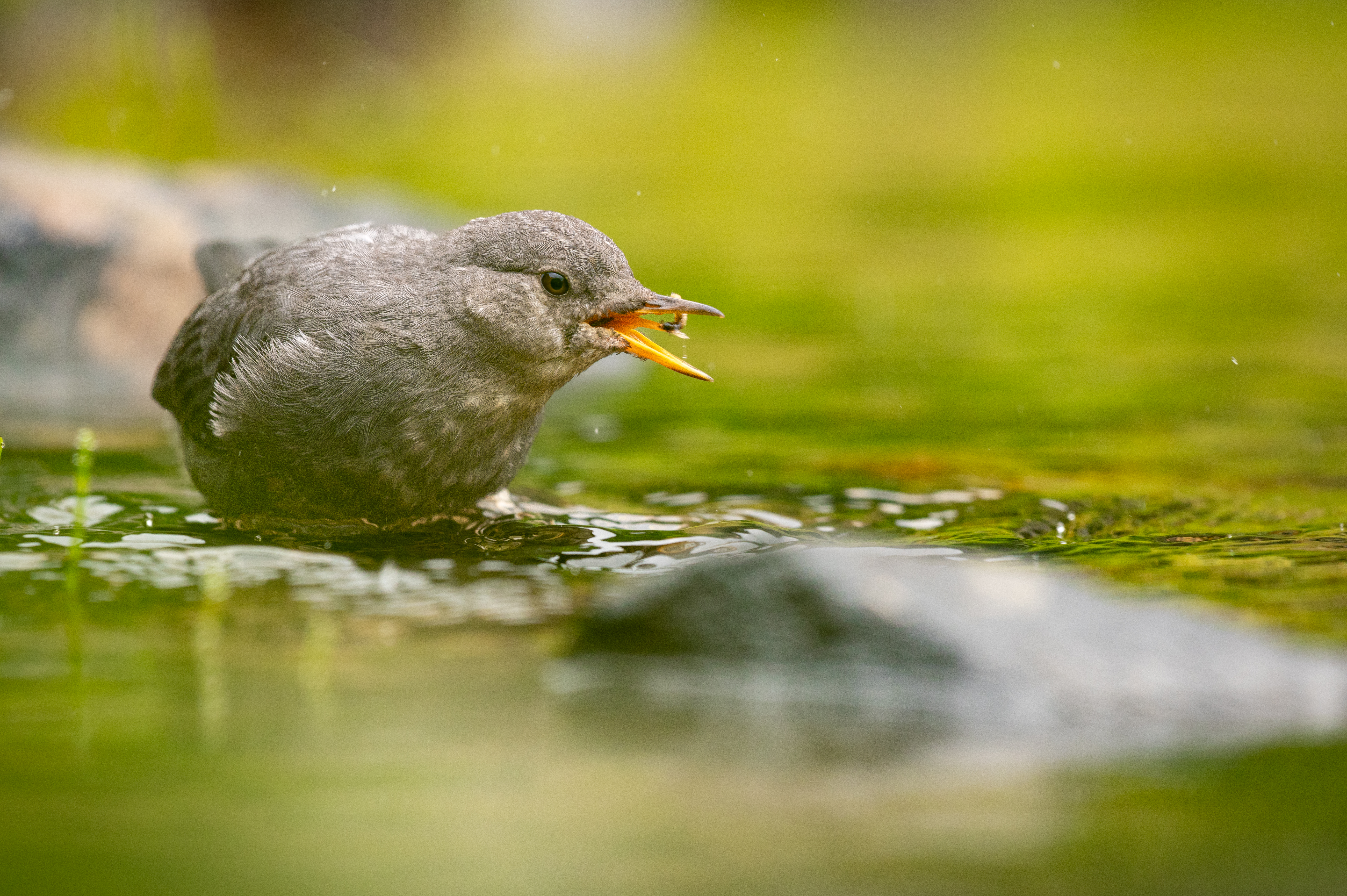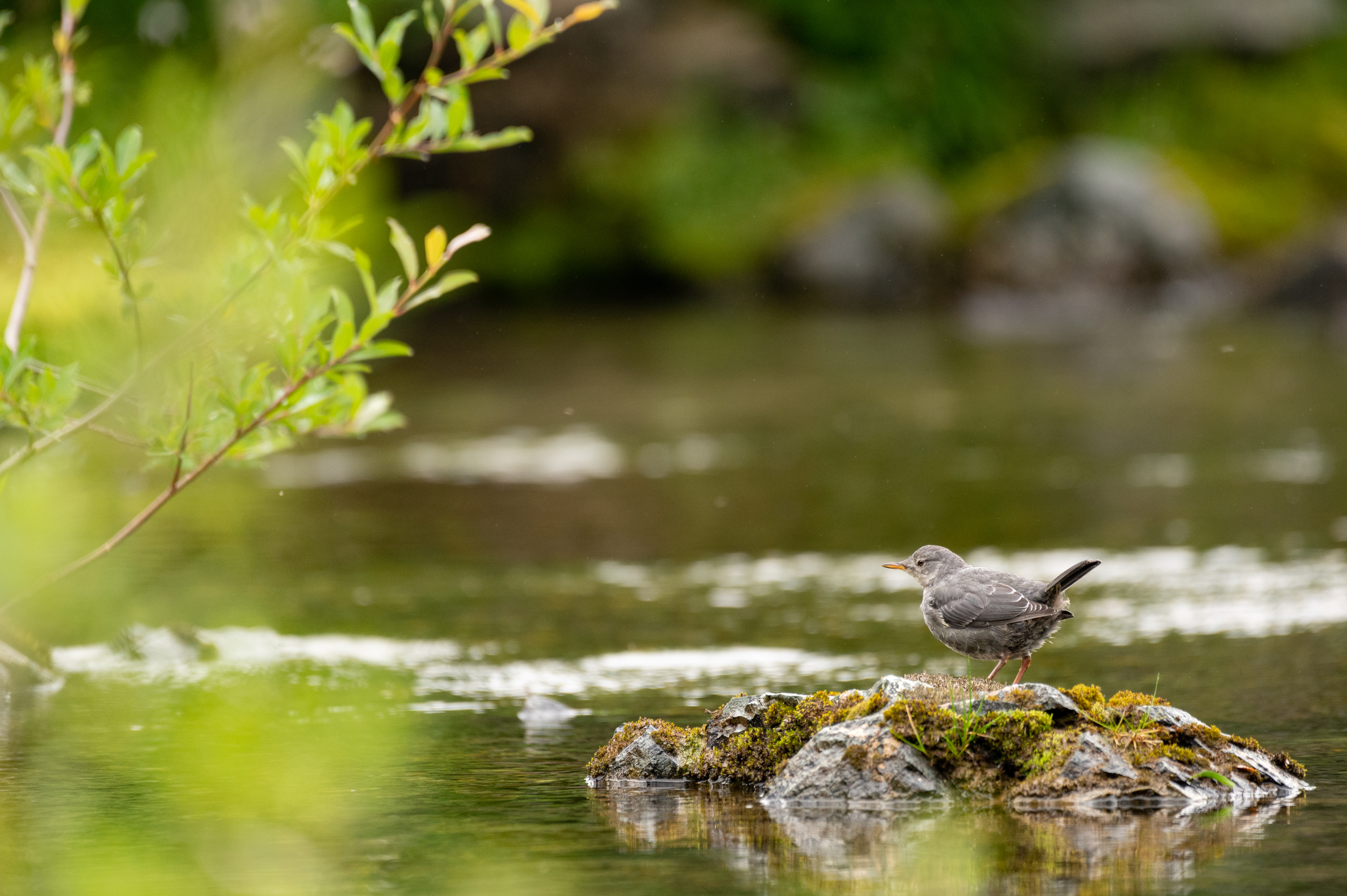
Why do dippers dive, dip, and dabble?
You’re walking along a mountain stream, or maybe along a river surrounded by forest giants, when suddenly, a movement in the stream catches your eye. Out of curiosity, you slowly make your way to the water’s edge. Nothing out of the ordinary it seems. You go to turn but the sudden appearance of a bird emerging from the water stops you in your tracks! You, my friend, have just had the pleasure of seeing an American dipper (Cinclus mexicanus).
American dippers are truly a joy to observe. These energetic birds work their way meticulously and methodically up and down the lengths of rivers and streams, ranging from the Rocky Mountains and westward. They occur from Mexico in the south, all the way to the northern reaches of Alaska. You can find them from sea level to high mountain streams.

Summerland area, Mt Rainier, WA (6400 ft above sea level)

Quilcene River, Quilcene, WA (<200 ft above sea level)
Dippers are year round residents and migrate only short distances, with the onset of winter, to maintain access to open water. They are insectivores, meaning they eat primarily insects, especially aquatic insects. Many species of insects have a larval stage that is aquatic, for example, mosquitos, black flies, rock flies, and dragon- and damsel-flies. The larvae of rock flies and black flies require fast flowing water, where they filter the cascading water while hanging on to rocks. It is these larvae that dippers search for when dipping under the water. In addition they eat various other prey in and around the water, including flying insects and fish eggs (roe) from species such as salmon.

Glacier Basin, Cascade Mountains, WA (4500 ft above sea level)
If you watch dippers for any length of time you are bound to see them bob (or dip) up and down repeatedly. This is behavior is a means of visual communication between dippers, usually members of their family. Having a means of communicating visually is important for these birds because they live in such noisy environments where the sound of rushing water can be deafening. In addition, when they blink, try to take a look at their eyelid; it is white! Again, having a flashy white eyelid contrasted against dark feathers could suggest that it is another means of communication.
So, the next time you are walking along a stream in the Pacific North West, take a moment to scan the water and banks or keep an ear out for their varied thrilling. You’ll be glad you did if you see one of these fabulous riparian residents.

Glacier Basin, Cascade Mountains, WA (4500 ft above sea level)
